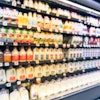While future demand for any protein, including meat will depend, to a great extent, on the level of recovery following the global financial problems, the European pork industry remains optimistic.
“It’s popular, cheap and it’s flexible,” says economist and chief executive of the British Pig Executive (BPEX) Mick Sloyan, “so many consumers have turned to it instead of lamb in an attempt to save money.”
Rising unemployment across Europe, and the negative effect on demand and prices may be a cause for concern, the result has been that consumers are being more careful with their money and buying a greater variety of pork cuts, including the cheaper ones.
“This has allowed produces to sell more of the pig here and in third countries, so produces in the UK, for example, are actually starting to see some benefits and are increasing production.
“Although British pig numbers have been static, or even falling, recently, I expect to see a small a small increase in 2010 because I believe demand will start growing again.”
Demand for pork can be expected to grow throughout Europe over the coming years and the region is likely to remain a significant player on the world pigmeat stage, especially given the predicted falls in production in the US and Canada. This could open new markets for European producers in South East Asia and China.
Latest figures from BPEX confirm this predicted upturn, at least for the UK. Chris Lamb, BPEX head of marketing points out that, in the four weeks to December 27th 2009, consumer pork purchases in the UK were up by 13.5%, compared to the same period in 2008. The rises were driven by increases in both shoulder and loin roasting joints.
Volume sales were up by 3.1% for the calendar year of 2009, which accounts for an additional 4,500 tonnes of pork sold in the country.
Mr Lamb comments: “Pork is seen as one of the best value for money meats people can buy, which is in part behind the increases we have seen.”


















